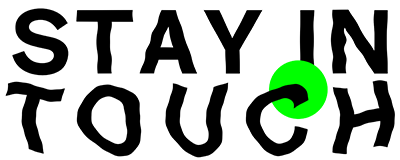1966 — »Where there is dirt, there is system«
Mary Douglas’s »Purity and Danger. An Analysis of Concepts of Pollution and Taboo« revisited
By Julia Boog-Kaminski
Mary Douglas’s »Purity and Danger. An Analysis of Concepts of Pollution and Taboo«
Purity and Danger reads the title of the book by Mary Douglas, published already in 1966, which couldn’t be more topical: It is about the regulation of social behavior through different purity laws, which concern, above all, body fluids, food, and diseases. In this context, Mary Douglas used the very broad term »pollution,« which is often misleading and would surely need to be differentiated more clearly in our day and age; at the same time, she also demonstrates just how many themes are addressed in the realm of the »impure.«
The social anthropologist provides illustrative examples of tribes around the globe, who have equally as much fear of the »madness« of their community members as they do of the menstruation blood of their women; who see unborn children as just as large danger as a murderer among them; or who try to separate themselves from their highly »contagious« spirits. But Douglas emphasizes that this way of thinking and the accompanying rituals cannot simply be dismissed as »magical« or »primitive,« rather they still define our current social life: »For I believe that ideas about separating, purifying, demarcating and punishing transgressions have their main function to impose system on inherently untidy experience.« (4) What we combat as germs, tribes ward off as »spirits.« (33) Hence, both notions of hygiene and purity are based on a belief, a belief in something invisible.
Precisely this invisible something creates a danger that goes far beyond the individual human being: it attacks the complete social fabric. The impure is not only not visible, it represents an unpredictable variable in an apparently ordered system. Thus, Douglas’ striking statement is: »Where there is dirt, there is system.« (36) By no means does the imagination and fear of pollution emerge from an individual, psychological constitution—which is time and again attributed to »bushmen« as anal, Oedipal, and animistic (cf. 59ff.)—rather from the state of social structures. It is here where hygienic measures are needed as »symbolic actions« (59) to keep their communities pure.
»A polluting person is always in the wrong,« (114) says Douglas, drawing attention to both the threat of individuals as well as the contamination of complete cultures. As health and hygiene can only be sustained in closed systems, personal and national borders alike are more strictly controlled in the event of epidemics. Today, it is primarily China, Italy, Spain, and the United States that have many infected persons coupled with a convoluted health system and are thus classified as being highly dangerous. As one can filter out from the debate on the »right« or »wrong« behavior of these nations, they are not being accused of negligence or misguided conceptions, rather, and above all, of willful deceit and too much (Spain, Italy) or too little (US and China) brotherly love. Hence, purity not only has a social but also a moral dimension.
Everything that is »hybrid« is considered impure: be it sticky substances that are neither liquid nor solid, animals that do not exclusively populate the air, water, or land, or people who are in ambiguous stages—unborn children, the pregnant, the menstruating, and especially the sick. In them, the community is confronted with its own ephemerality as well as the ostensible supernatural powers of these contaminated people, which can clearly not be reduced to the belief in witchery of »primitive« communities. What turns women and children, in particular, into witches in many tribal cultures, presently transforms a sick person into a »superspreader.« Moreover, this highly infectious individual is often accentuated in the media with »supercoughs« or even just »superbreath« which drastically feeds the superpower of the sick and therewith the fear of him or her.
Here Douglas elaborates another important point: namely, hybridity refers both to the aforementioned »transitional states« (97) as well as any being »which creeps, crawls or swarms.« (57) Among such beings is also the coronavirus: time and again, it is portrayed in stock images as a swarming little creature equipped with an arsenal of suction cup limbs or tiny legs, which, especially in pandemic times, can magically bore through the skin and end up in the respiratory system, as it were, without taking the detour of a droplet infection. Like the superspreader, the virus itself possesses a superpower, which it obtains through its indefinable being, its intangible effects in the human body and between people.
In the reading of Douglas’s book, it would seem that our Western medicine is equally governed by »Magic and Miracle« (the name of a chapter), like the rituals of a shaman. Although the modern world, with its microscopes and other technologies, can penetrate further into the secluded, frightening depths, it still suffers—as can be seen in the desperate search for immunity agents—from blind spots and pure speculation. Precisely here spreads the panic: »Both we and the bushmen justify our pollution avoidance by fear of danger.« (70) The African Dinka, which Douglas’s strong influence Durkheim studied more closely, organized dances to wash their »dirty« withered earth with rain or feared that their men could be weakened by the mere presence of a woman; we, on the other hand, fear that even the proximity of a corona case could infect us and believe that those with a pre-existing medical condition should be handled with great care. For two reasons: officially, because we want to protect them; but under the surface, because they already represent a greater danger in their hybridity.
What becomes clear is that it is the combination of »impurity and danger« that turns risk groups and the sick alike into excluded persons in times of epidemics. They must be excluded not only for their own protection but also for the protection of the complete society. Because they make the entire economic system »suffer« (in corona times it is furnished with just as many sickness metaphors as the pandemic itself) and because they seem more infectious and threatened by death than »normal« people. But, as Douglas emphasizes, this fear can only be sustained »if anyone held the idea that death and suffering are not an integral part of nature.« (179) Her analyses of tribal societies and, in the truest sense of the word, »transmissions« to modern social life illustrate just how much our contemporary society is suffering from that which the »primitives« dismiss as »magical.« »The ritual enactment of death is protection, not against death but against madness.« (178) Now is precisely the right moment for rituals and thus the integration of sickness and death in everyday life: »Cults […] invite their initiates to turn around and confront the categories on which their whole surrounding culture has been built up and recognise them for the fictive, man-made, arbitrary creations that they are.« (170f.)
Mary Douglas’s Purity and Danger. An Analysis of Concepts of Pollution and Taboo

